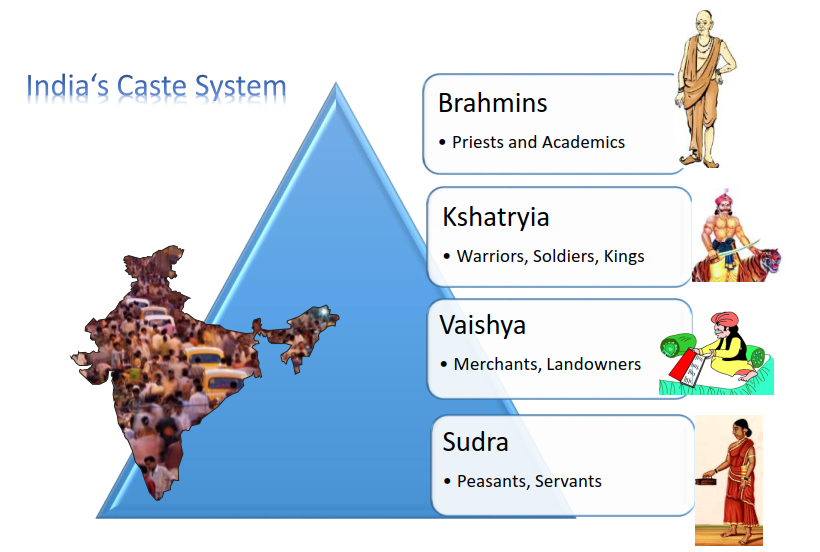English Across the Curriculum
Discover India
The Caste System
A large part of Indian society still lives in a system dominated by castes. A caste is a social class which every Indian is born into. There are a few thousand castes in India and each one of them has their own traditions and customs. Once a person is born into a caste they cannot get out, or marry someone from a different caste. Castes have existed throughout Indian history and although they are based on Hindu beliefs, other religions live in castes too. The caste system tells people which jobs they can have and with which people they can have contact.
The caste system is based on four major classes. At the top are the Brahmins or priests. Below them are rulers, kings, soldiers and other people who work in the government. Then come bankers, businessmen and traders. At the bottom of the caste system are normal workers and farmers.
Each caste has certain rights and privileges. Everyone, for example, can get food from a Brahmin, but a priest himself is thought to be polluted if he receives food from a person of a lower caste.
A large group of people, called untouchables, live outside the caste system. Untouchables are often homeless people who live on the streets and under bridges. They do work that nobody else does and are often excluded in Hindu ceremonies. They are not allowed to drink water from a public fountain for fear of polluting the water for others.
Although the caste system is no longer officially allowed, it still exists, especially in the rural areas of India.

India's caste system